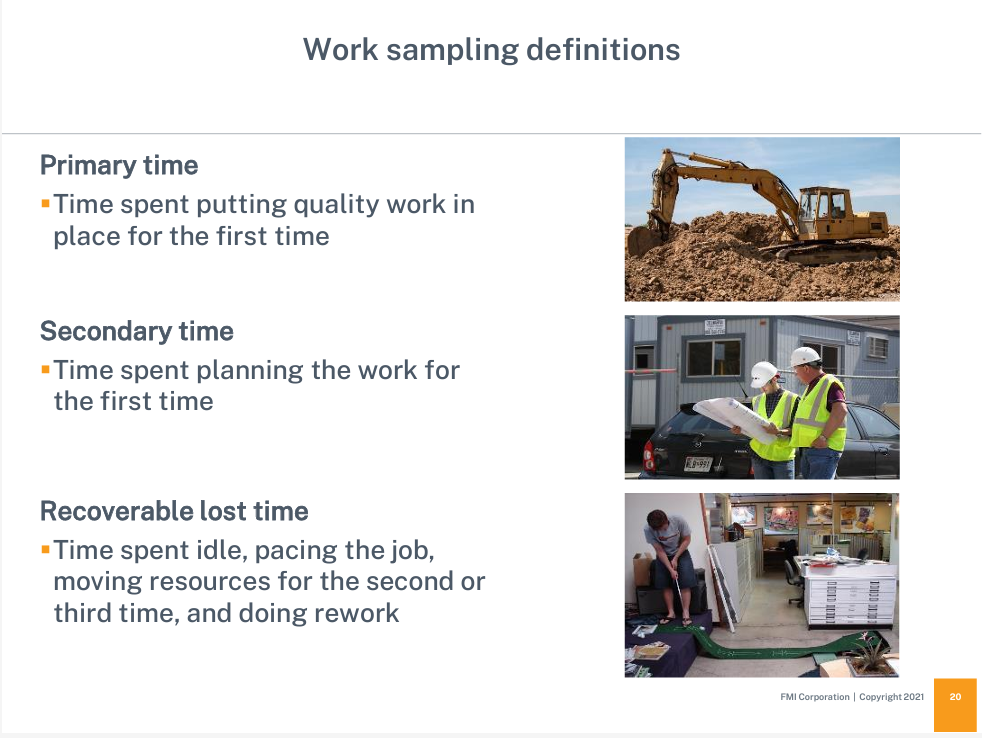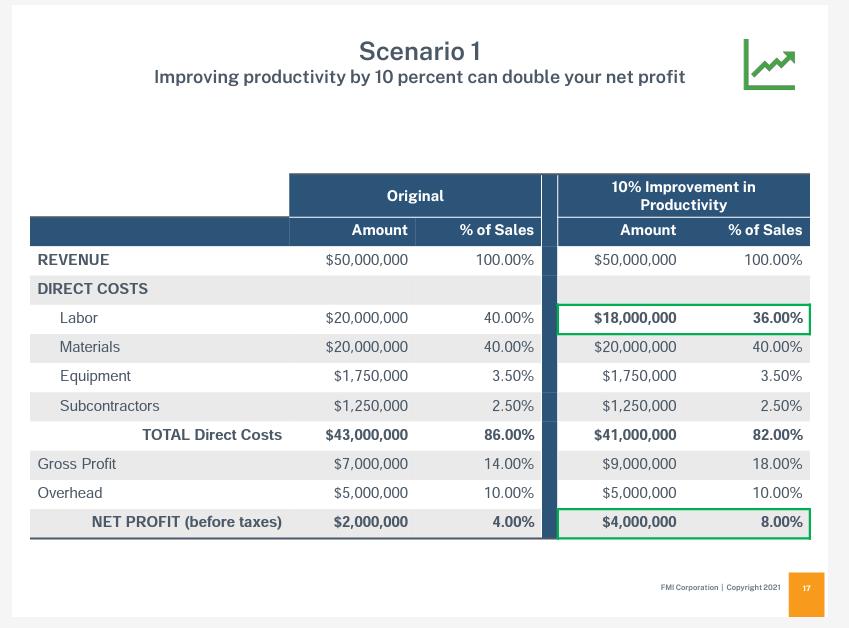From the desk of Gene Lilly:
Happy Holidays!
On behalf of everyone at Gene Lilly, we want to wish you a Merry Christmas and a Happy New Year. We thank you for the continued partnership and look forward to a prosperous 2023. Our office hours for the holidays are below. We hope you enjoy time spent with family and friends.
December 23rd: 8:00 am – 12:00 pm
December 26th: Closed
January 2nd: Closed
As we approach the end of the year and look towards 2023, continue to engage your surety partners, CPA, and banker on how to best approach some of the potential challenges that may loom. We are all aware of the chatter going on about a possible recession in the next 12-18 months and working with your business partners to prepare now will pay dividends later. In the article below, we look at how just minor changes/issues can impact your bottom line on a single project. Apply this principle of minor efficiency tweaks to your approach for the year and it can have positive impacts on the overall bottom line at year-end. Contact our team to discuss how to approach the possible challenges in the coming year and maintain or grow your surety credit.

The Value of 20 Minutes
The theme of 2022 for some contractors has been, “We still made money, but not as much as 2021.” Many organizations are seeing the effects of input inflation shrink their profit results. Material shortages have also contributed to lost productivity during key volume months. Countless contractors have reminisced of times when concrete was readily available and manpower could easily be found. This past year has shown just how difficult it is to consistently generate profit in construction. Let’s first look at what erodes profit and then think of ways to prevent it. Our main focus will be on labor as it is most controllable at the contractor level.
- Labor cost increase – Due large part to inflation, many contractors had to increase their labor wage rate. Increasing labor pay by $2/hour may be as much as a 10% increase in labor costs.
- Labor productivity – Labor force productivity is what separates the good contractors from the great contractors. Efficient projects start with 1st time-productive labor, where the majority of labor effort is spent putting quality work in the first time to minimize rework and downtime.
- Material price increase – Most organizations rarely mark materials up more than a couple of percentage points when bidding work. In an inflationary environment, these input costs escalate with price increases. Suddenly things that were priced 18 months ago are costing significantly more. This cost erodes profit margin.
- Material shortages – When materials are not available, crews cannot execute projects in as profitable of order. Many good contractors can alter the sequence of the job to allow for missing materials, but the effect can be a slower job site and certain areas of lower productivity. That additional time costs money both in the office and field which drives a job into the red. Everyone has experienced a well-sequenced project and knows how much more profitable they can be.
FMI presented a study showing the effects of productivity to the Construction Financial Management Association at the Heartland Conference. It shows the profit impact of a 10% improvement in primary time production. Primary time production is defined as time spent putting quality work in place for the first time. Secondary time is time spent planning the work for the first time, and “Recoverable Lost Time” is time spent idle, moving resources for a second or third time, and doing rework.

The cumulative effect of small, efficient efforts over a long duration is great. Based on an 8-hour day, 10 additional minutes of quality productivity in the morning and 10 in the afternoon (20 total minutes) can yield a 4.16% increase in bottom-line net profit from neutral (20 minutes divided by 480 total minutes).

Consequently, this same amount of decrease of productivity would erode profits by the same amount. With many construction companies putting 4% to the “bottom line,” this efficiency increase can DOUBLE the net income of many companies. Considering this spread of 8.32% based purely on productivity, low productivity work can also cause a company to break even or possibly lose money! See slides 17-21 of the attachment for more info.

The cumulative effect of efficiency and productivity can be substantial on the bottom line of a construction company. When net profits are driven primarily by selling labor, being highly productive with those hours is crucial. The savvy contractor continually reviews his processes with a focus on eliminating lost labor time, either due to rework or even not working. Finally, determining if overhead is truly necessary is paramount as well. Efficiency and productivity are our only options on previously priced work. Jobs going forward should increase bids to account for new costs. Nonproductive costs (overhead) should also be analyzed for any waste reduction.
2023 Construction Economic Update
Construction Executive hosted a webinar with ABC’s Chief Economist Anirban Basu who provided an economic update and forecast for the construction industry in 2023. Basu continues to predict a recession during the year but possibly has a lower impact than once thought. He attributes the recession to continued supply chain disruption, a difficult labor market, and inflation.
There were some positive signs with Basu noting that the height of the supply-chain issues seems to be past and contractors have a great outlook in the next 5 years with infrastructure funding. Contractors continue to have strong backlogs.
When asked about what contractors can do to prepare, Basu suggested an aggressive cash flow management plan and finding ways to save other than trimming jobs. Our article above illustrates a way to do this and maintain margins by finding ways to increase the productivity and efficiency of your current resources. Small increases in efficiency in all phases of a project can have substantial positive impacts.

